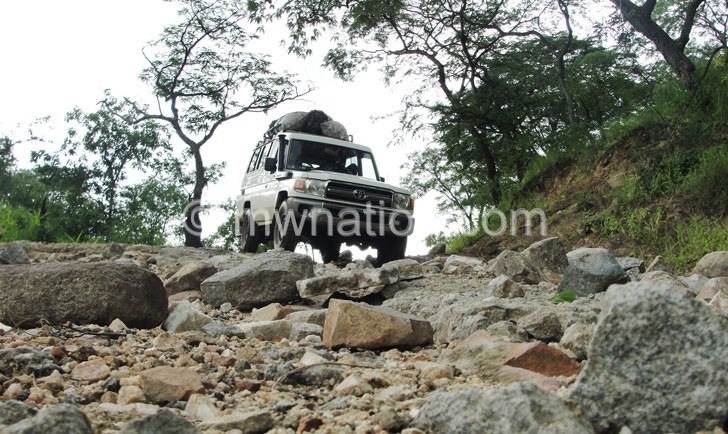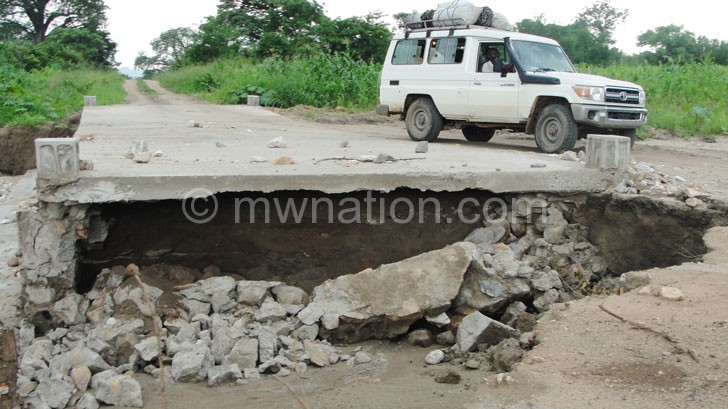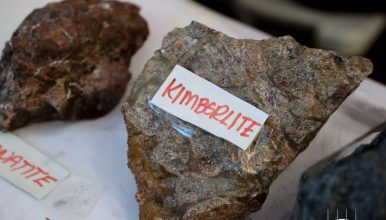Journey to hard-to-reach Neno
With a population of about 170 000, Neno district has no tarmac roads. Never mind that it was declared as a district in 2002 by Malawi second president Bakili Muluzi, you still have to strangle to get through to the boma.
To reach Neno, there are several routes; from Neno Turn-off on the Blantyre-Mwanza Road, Neno Turn-off and Khwinda on M1 Road through Lisungwi, Tsangano in Ntcheu on M1 Road and Kandoje via Mota-Engil campsite.

From Neno Turn-off on Blantyre-Mwanza Road to Neno boma, it is 37 kilometres (km). While on the M1 Road from Neno Turn-off and Khwinda it is 25km. And it is 100km from Tsangano in Ntcheu to the boma.
The ride to Neno is uncomfortable—using any of these routes. The roads are bumpy, narrow, have steep slopes and sharp bends. The whole travelling exercise leaves passengers feeling pain and exhausted.
For instance, it takes two hours of driving to Neno through Lisungwi from Neno Turn-off or Khwinda on M1 Road and four hours using the road from Neno Turn-off on Blantyre-Mwanza Road. On a normal road, that journey would take 30 minutes.
And it is over two hours using the Kandoje route via Mota-Engil. During the rainy season, people use this route in order for them to cross Lisungwi on a bridge.

They pass through Funsani 1 and 2 before reaching Mkavu and connecting to Changa Road via Mota-Engil campsite then Kandoje on the M1 Road.
However, the shortest route is from Neno Turn-off on M1 Road through Lisungwi. Now this road is impassable because of the water levels.
From this turn-off, the rugged road stretches through dusty plains of bushes and small trees before reaching Lisungwi community—a small trading centre.
This route passes through the savanna countryside—an expanse of scattered baobab, tsanya and mkunguni trees. The shrubs and grass on the undulating hills and woodlands complete the beautiful scenery.
However, it is not used for public transport for its steep gradient at some points along the way. Big vehicles such as buses, trucks and lorries use the route from the turn-off on the Blantyre-Mwanza Road which people say is expensive for transport.
One businessman at Neno Boma, Mark Njolomole complains about the high transport fares to and from Blantyre.
“This route is expensive as passengers pay around K3 000 the bus fare from Neno to Blantyre. It’s expensive for businesspeople like me who buy merchandise from Blantyre to sell here in Neno,” he complains.
Esmie Masina, 55, from Joliji Village, Traditional Authority (T/A) Chekucheku in the district says people did not receive fertiliser and other farm inputs in 2015 because of poor roads.
“The roads are impassable during the rainy season. As a result, fertiliser is delivered during the rainy season. With slippery roads, trucks can’t pass,” she explains the situation.
Her claims are corroborated by Neno North Member of Parliament (MP) Emmanuel Lozo that in 2015, government subcontracted people to bring fertiliser to Neno.
“Those subcontractors did not bring the fertiliser because of poor roads. And this contributed to the poor harvest in the district,” he says.
James Manduwa, a farmer from Kambale where more Irish potatoes are grown, complains about the expensive transport costs of transporting the potatoes from Neno to Blantyre.
“The transporters charge us about K1 500 per bag to the city,” he says.
Traders at Neno Market say that the market has potential to grow only when the road that passes by is bituminised.
According to Lozo, various governments in the past have not put tar on this road.
“The people of Neno have been facing a lot of problems transportation of goods is one of them,” he explains.
Neno is an agricultural district; the people grow Irish potatoes, maize, beans, oranges, bananas, tangerines, cassava and wheat. Therefore, the road will boost trade in the hilly district.
Just across the market is Neno Depot—just by name as buses do not stop there. The only notable facilities inside the depot are bottlestores.
From the turn-off on the Blantyre-Mwanza Road, the road to Neno passes through Mtayanyemba; a steep slope where bags of beans used to slip off the trailers of vehicles, hence the name.
It then runs through Magaleta Trading Centre, rolling like a giant snake on the bare ground to Ligowe—up and down the hills to the boma, Kambale and to Tsangano in Ntcheu.
Government has started constructing the road. There is a tarmac stretch, covering a few kilometres from the turn-off.
The District Commissioner (DC) for Neno, Ali Phiri, says the road project is on course. Relief at last.
“The construction project is underway. This will continue up to Tsangano in Ntcheu,” he says.
According to this year’s National Budget, government has allocated K8 billion for the entire 137 km road from the turn-off to Tsangano.
When the project is completed, it will be a big relief for people travelling to Neno. One only hopes it will be completed in time, unlike other road projects that take aeons to complete.





